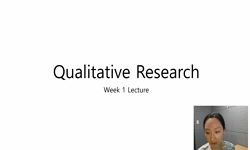This study investigated the social outcomes of the Environmental Health Studies of National Industrial Complex (EHSNIC), which have been conducted by the National Institute of Environmental Research (NIER) in eight National Industrial Complex Areas (N...
http://chineseinput.net/에서 pinyin(병음)방식으로 중국어를 변환할 수 있습니다.
변환된 중국어를 복사하여 사용하시면 됩니다.
- 中文 을 입력하시려면 zhongwen을 입력하시고 space를누르시면됩니다.
- 北京 을 입력하시려면 beijing을 입력하시고 space를 누르시면 됩니다.


Environmental Health Studies in the Korean National Industrial Complexes (EHSNIC): Focus-Group Interviews
한글로보기https://www.riss.kr/link?id=A106623221
-
저자
Ji Ae Lim ; Ho-Jang Kwon ; Hyun-Joo Kim ; Mina Ha ; Xue Han

- 발행기관
- 학술지명
- 권호사항
-
발행연도
2019
-
작성언어
English
- 주제어
-
KDC
539
-
등재정보
SCOPUS,KCI등재
-
자료형태
학술저널
- 발행기관 URL
-
수록면
2-11(10쪽)
- 제공처
-
0
상세조회 -
0
다운로드
부가정보
다국어 초록 (Multilingual Abstract)
This study investigated the social outcomes of the Environmental Health Studies of National Industrial Complex (EHSNIC), which have been conducted by the National Institute of Environmental Research (NIER) in eight National Industrial Complex Areas (NICAs) since 2003. Eighteen sessions of focus-group interviews with 85 people were conducted from October 2016 to January 2017. Interviewees were stakeholders from eight NICAs and included resident representatives, environmental nongovernment organizations, local government officials, and environmental health and safety officers from companies. Interview results were divided into six categories: EHSNIC awareness, EHSNIC outcomes, EHSNIC limitations, EHSNIC continuation, EHSNIC improvement directions, and EHSNIC results use. They were then further indexed into 23 divisions. EHSNIC awareness varied across stakeholders. A major EHSNIC outcome is that a continued result database was established, which was used as a reference for environmental improvements. EHSNIC limitations included no proper healthcare actions taken during the EHSNIC study period, a lack of EHSNIC results disclosure, a failure to reflect local specificity, and a lack of validity in the results. Regarding EHSNIC continuation, all stakeholders said EHSNIC should be conducted continuously. EHSNIC improvement directions included conducting studies tailored to each NICA, identifying correlations between pollutant exposure and disease, increasing the sample size, and performing repeated studies. Regarding EHSNIC results use, respondents wanted to use the results as a reference to relocate residents, ensure distance between NICAs and residential areas, provide healthcare support, develop local government policies, and implement firms’ environmental controls. Since EHSNIC aims to identify the health effects of NICAs on residents and take appropriate actions, it should be continued in the future. Even during the study period, it is important to take steps to preventively protect residents’ health. EHSNIC also needs to reflect each NICA’s characteristics and conduct reliable research based on stakeholder participation and communication.
목차 (Table of Contents)
- INTRODUCTION
- METHODS
- Results
- Discussion
- REFERENCES
- INTRODUCTION
- METHODS
- Results
- Discussion
- REFERENCES
동일학술지(권/호) 다른 논문
-
- 환경독성보건학회
- Jung-Hwan Kwon
- 2019
- SCOPUS,KCI등재
-
- 환경독성보건학회
- Kanu C. Kingsley
- 2019
- SCOPUS,KCI등재




 DBpia
DBpia






